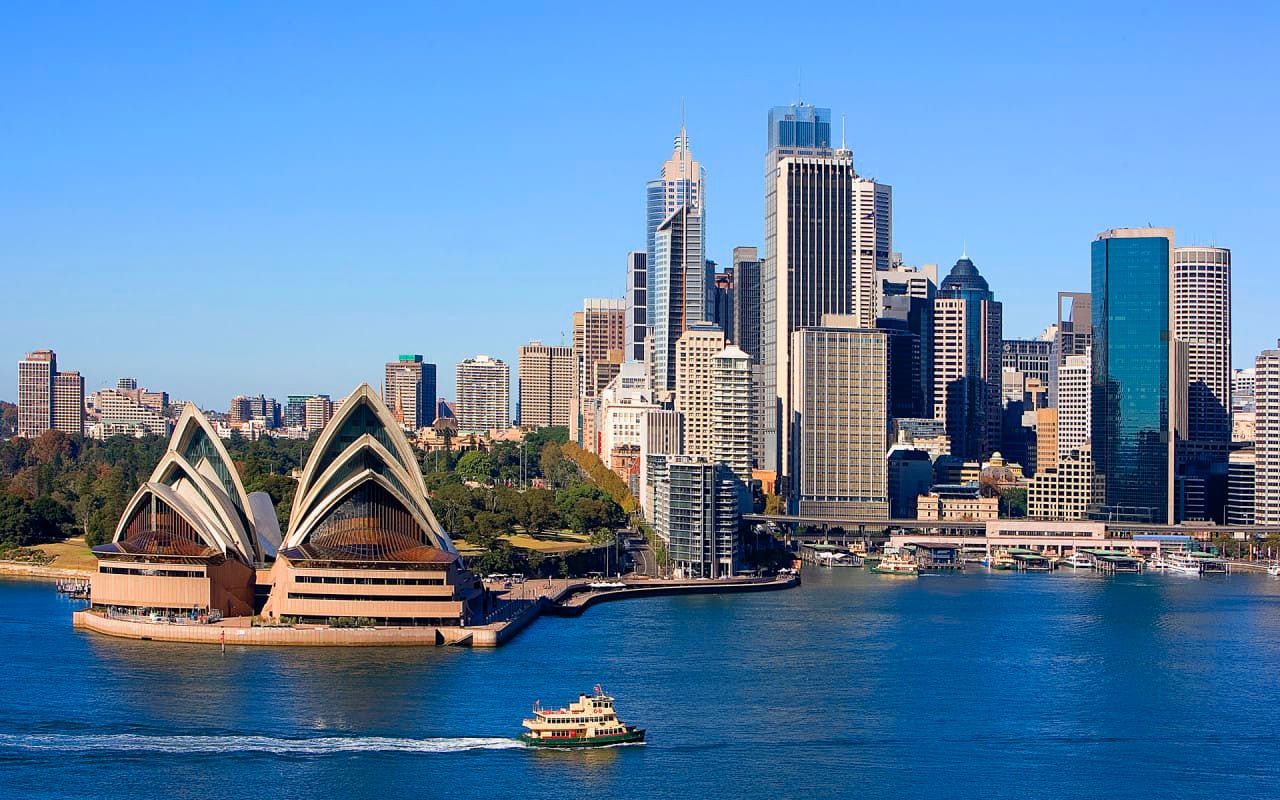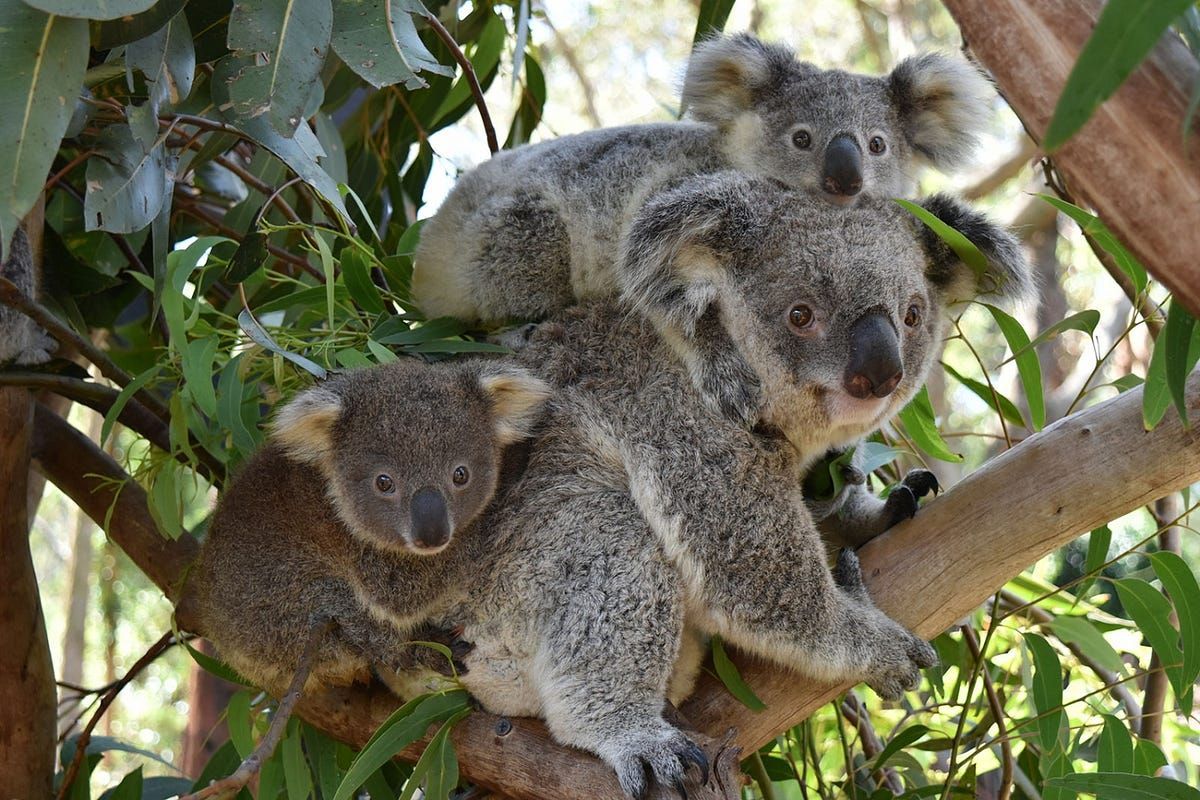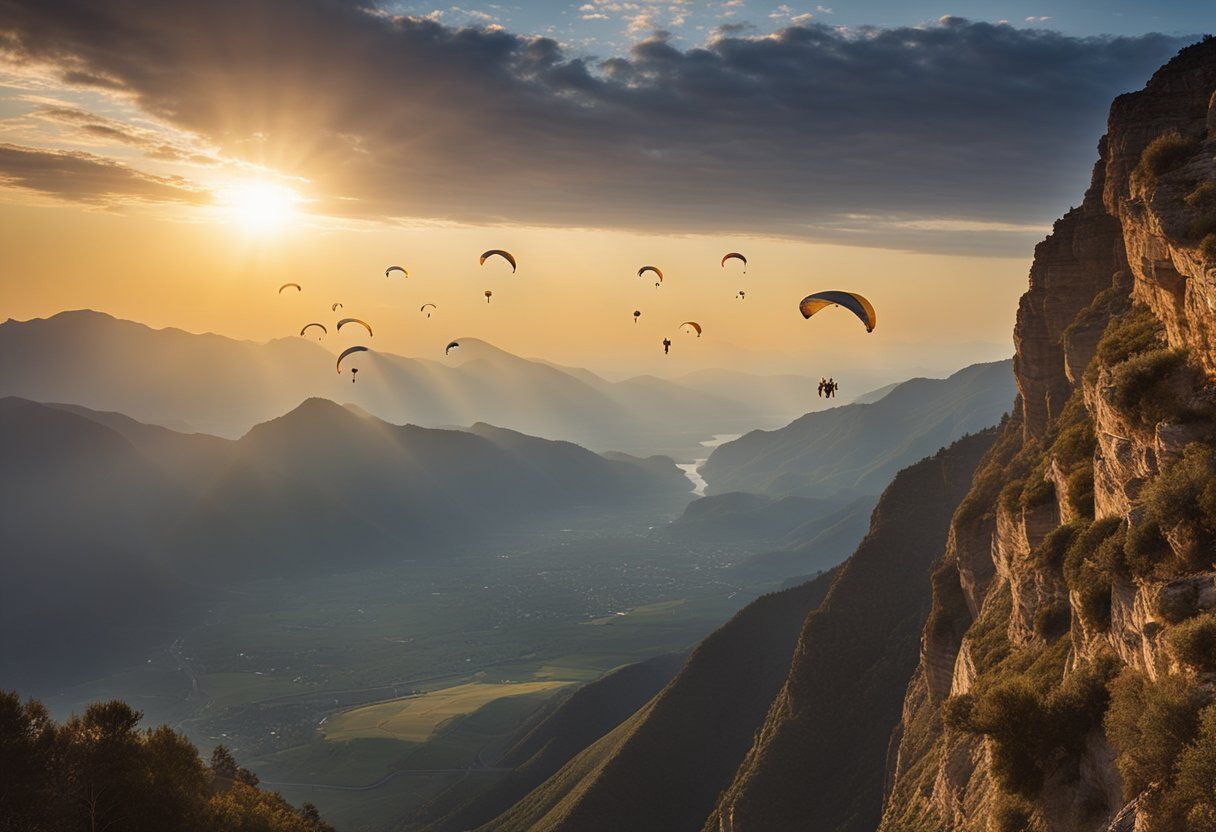To share
Explore the wonders of Uluru-Kata Tjuta National Park. From awe-inspiring rock domes to ancient Aboriginal art, this iconic destination offers a unique blend of nature and culture. Start planning your unforgettable outback journey now.
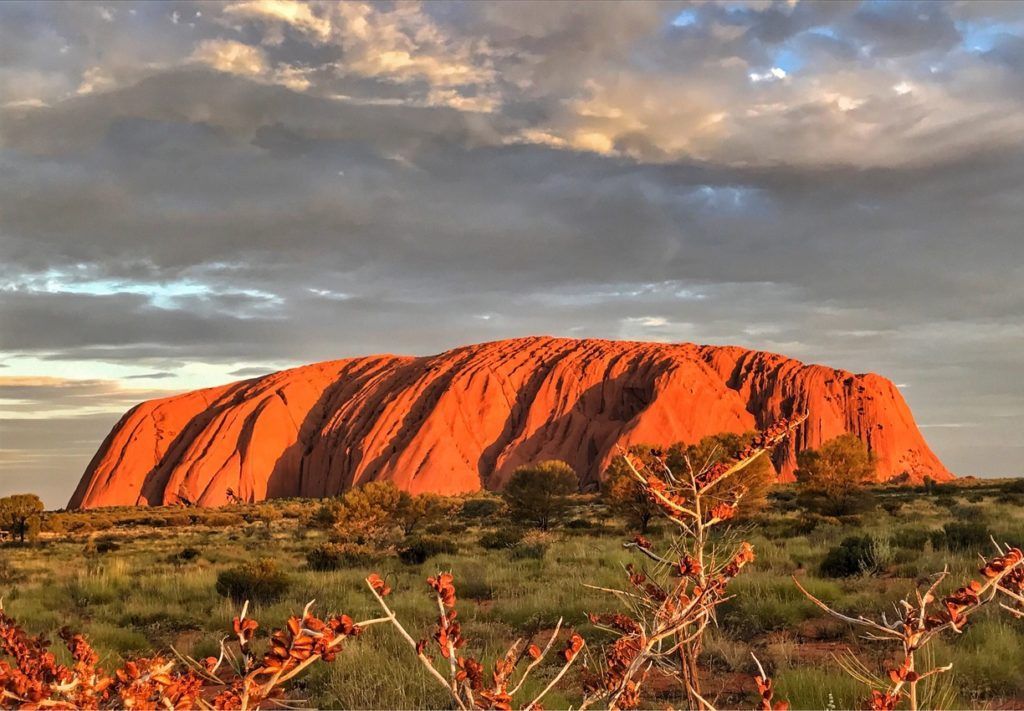
1. Uluru-Kata Tjuta National Park
Geographical location and landscape
Uluru-Kata Tjuta National Park is situated in the heart of Australia's Red Centre, approximately 450 kilometers southwest of Alice Springs. The park covers an area of 1,326 square kilometers and is characterized by its striking red desert landscape, dotted with sparse vegetation and ancient rock formations.
Cultural significance to the Anangu people
For the Anangu people, the traditional owners of the land, Uluru-Kata Tjuta holds profound spiritual and cultural importance. The area is intricately woven into their Tjukurpa (creation stories), which form the foundation of their culture, law, and daily life. These sacred sites are central to Anangu ceremonies and rituals that have been practiced for thousands of years.
UNESCO World Heritage status
Uluru-Kata Tjuta National Park was inscribed on the UNESCO World Heritage List in 1987 for its natural values and again in 1994 for its cultural significance. This dual listing recognizes both the park's geological wonders and its importance to the Anangu people, making it one of the few places in the world with this distinction.
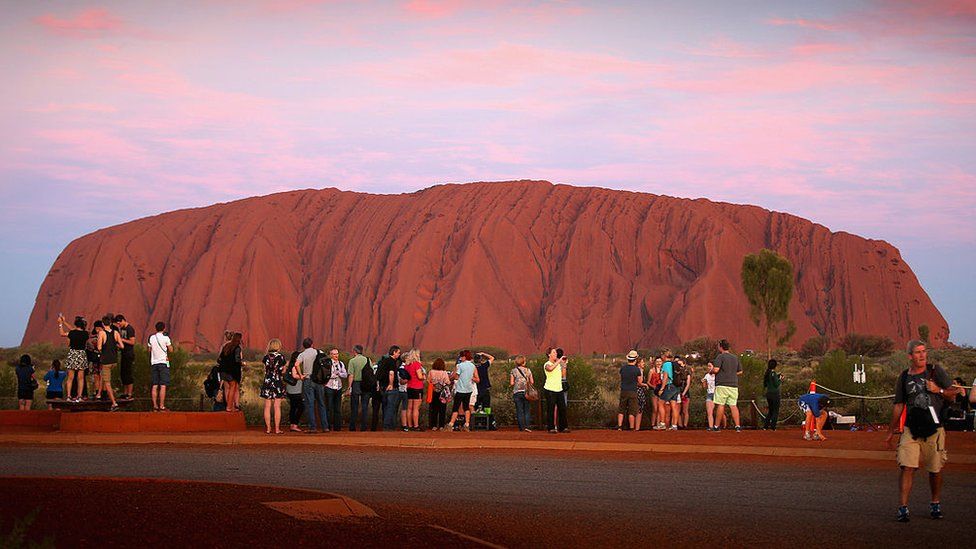
2. Exploring Uluru (Ayers Rock)
Geological formation and history
Uluru, also known as Ayers Rock, is a massive sandstone monolith that rises 348 meters above the surrounding plains. Geologists estimate that Uluru began forming around 550 million years ago when sand and gravel were deposited on an alluvial fan. Over time, these sediments were compressed and oxidized, resulting in the iconic red color we see today.
Best viewpoints and photography spots
- Talinguru Nyakunytjaku: This purpose-built viewing area offers stunning sunrise views of both Uluru and Kata Tjuta.
- Uluru Base Walk: The 10.6-kilometer trail around the base of Uluru provides numerous opportunities for close-up photography and intimate views of the rock's textures and formations.
- Kata Tjuta Dune Viewing Area: This elevated platform offers panoramic views of Kata Tjuta and Uluru in the distance, particularly beautiful during sunset.
"The changing colors of Uluru throughout the day, from deep reds to brilliant oranges, create a mesmerizing spectacle that captivates photographers and visitors alike."
Guided tours and walking trails
Several guided tours and self-guided walking trails allow visitors to explore Uluru and its surroundings:
- Mala Walk: This 2-kilometer return walk is led by a ranger and provides insights into Anangu culture and the geology of Uluru.
- Valley of the Winds Walk: Located at Kata Tjuta, this challenging 7.4-kilometer circuit offers breathtaking views of the domes and surrounding landscape.
- Kuniya Walk: A short 1-kilometer return walk that leads to the Mutitjulu Waterhole, where visitors can see rock art and learn about Anangu creation stories.
These guided tours and walking trails offer visitors the opportunity to gain a deeper understanding of the natural and cultural significance of Uluru-Kata Tjuta National Park while experiencing its awe-inspiring beauty firsthand.
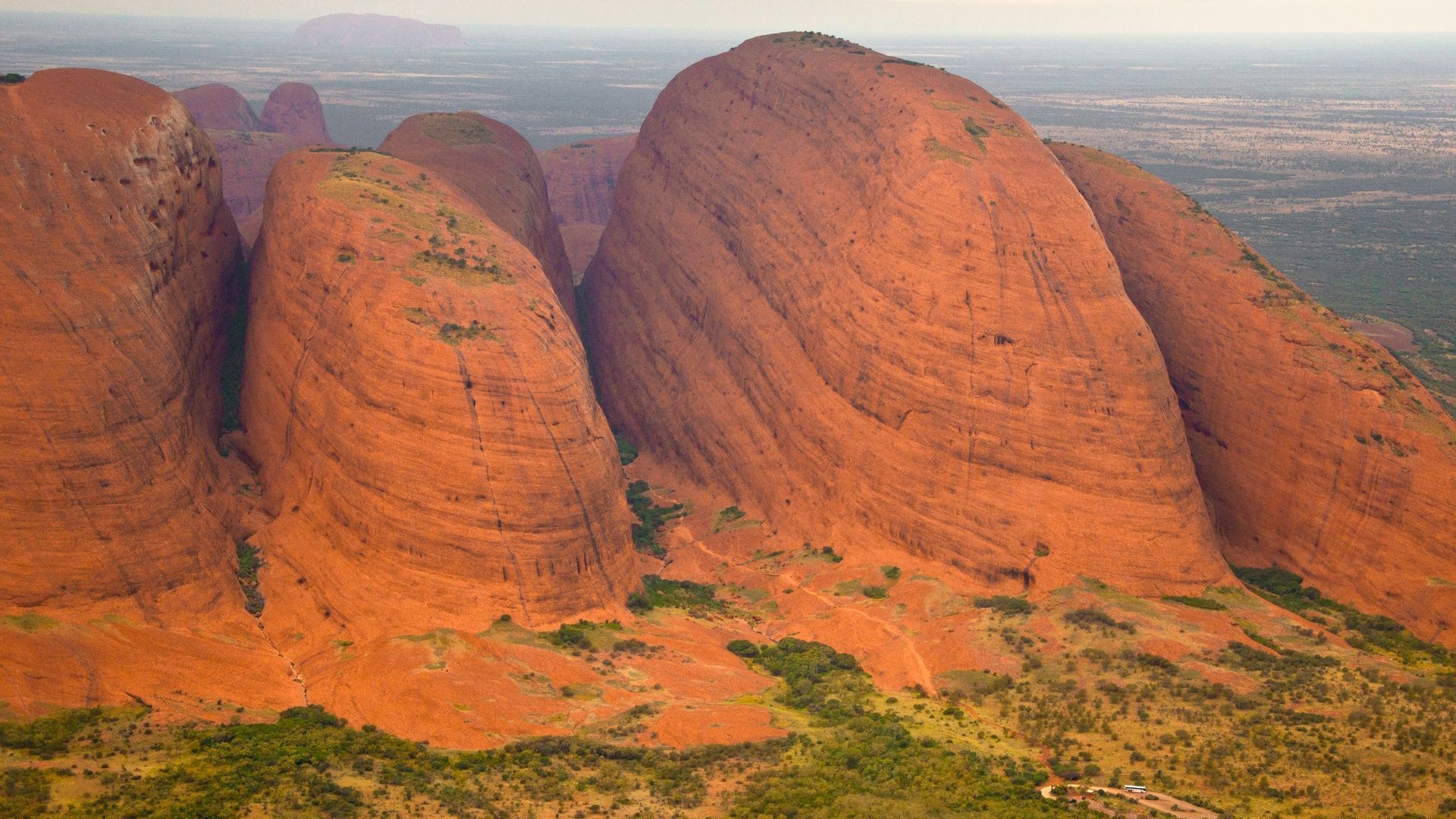
3. Discovering Kata Tjuta (The Olgas)
The 36 domes of Kata Tjuta
Kata Tjuta, also known as The Olgas, is a remarkable geological formation consisting of 36 distinct domes spread across an area of approximately 20 square kilometers. These ancient rock formations, composed primarily of conglomerate rock, have been shaped by millions of years of erosion and weathering. The tallest dome, Mount Olga, stands at an impressive 546 meters above the surrounding plain, offering a striking contrast to the flat desert landscape.
The domes of Kata Tjuta hold significant cultural importance for the Anangu people, the traditional custodians of the land. Each dome has its own story and meaning within their culture, contributing to the rich tapestry of Indigenous Australian mythology.
Visitors can experience the awe-inspiring beauty of Kata Tjuta from various vantage points. The Kata Tjuta dune viewing area provides an excellent opportunity to witness the changing colors of the domes during sunrise and sunset, creating a truly magical atmosphere.
Valley of the Winds walk
The Valley of the Winds walk is one of the most popular and rewarding hiking experiences in Kata Tjuta. This challenging 7.4-kilometer circuit takes approximately 3-4 hours to complete and offers breathtaking views of the surrounding landscape.
The trail winds its way through the heart of Kata Tjuta, allowing hikers to immerse themselves in the unique environment. Along the way, visitors can observe diverse flora and fauna, including rare plant species that have adapted to the harsh desert conditions.
Key features of the Valley of the Winds walk include:
- Two spectacular lookout points: Karu and Karingana
- Steep sections that require a moderate level of fitness
- Opportunities to spot native wildlife such as wallabies and various bird species
It's important to note that the full circuit may be closed during extreme weather conditions, so it's advisable to check the park's website or visitor center for up-to-date information before embarking on the walk.
Walpa Gorge trail
For those seeking a less strenuous option, the Walpa Gorge trail offers a more accessible way to experience the beauty of Kata Tjuta. This 2.6-kilometer return walk takes approximately one hour to complete and is suitable for most fitness levels.
The trail leads visitors through a natural creek between two of Kata Tjuta's largest domes. As you walk, you'll be surrounded by towering rock walls and diverse vegetation, including rare plants that thrive in the sheltered environment of the gorge.
Highlights of the Walpa Gorge trail include:
- A gentle incline suitable for families and less experienced hikers
- Interpretive signage providing insights into the area's geology and ecology
- Spectacular views of the surrounding desert landscape
The Walpa Gorge trail is particularly beautiful in the early morning or late afternoon when the changing light creates stunning effects on the rock formations.

4. Cultural Experiences and Indigenous Art
Visiting the Uluru-Kata Tjuta Cultural Centre
The Uluru-Kata Tjuta Cultural Centre serves as a gateway to understanding the rich cultural heritage of the Anangu people. Located near the base of Uluru, this architecturally impressive building houses a wealth of information about the traditional owners of the land, their customs, and their connection to the surrounding environment.
Key features of the Cultural Centre include:
- Extensive displays of Indigenous art and artifacts
- Interactive exhibits explaining Anangu law, culture, and land management practices
- A theater showing informative films about the region's history and ecology
- Art galleries where visitors can purchase authentic Indigenous artworks
The Cultural Centre also provides an opportunity to learn about the concept of Tjukurpa, the foundation of Anangu culture that encompasses law, religion, and moral systems.
Traditional dot painting workshops
Participating in a traditional dot painting workshop offers visitors a unique opportunity to engage with Indigenous art and culture. These workshops, often led by local Anangu artists, provide insights into the techniques, symbolism, and stories behind this distinctive art form.
During a typical workshop, participants will:
- Learn about the significance of different symbols and patterns in Indigenous art
- Receive instruction on traditional dot painting techniques
- Create their own artwork using authentic materials
- Gain an understanding of the connection between art and storytelling in Anangu culture
These workshops not only offer a hands-on creative experience but also foster a deeper appreciation for the complexity and beauty of Indigenous Australian art.
Bush tucker tours and native food experiences
Exploring the culinary traditions of the Anangu people through bush tucker tours and native food experiences provides a fascinating insight into Indigenous culture and the region's unique ecosystem.
These tours typically involve:
- Guided walks through the desert landscape to identify edible plants and traditional food sources
- Demonstrations of traditional hunting and gathering techniques
- Tastings of native foods and explanations of their nutritional and medicinal properties
- Discussions about sustainable land management practices and the importance of preserving traditional knowledge
Participants may have the opportunity to sample foods such as bush tomatoes, quandongs, and wattle seed, learning about their preparation and cultural significance. These experiences not only offer a unique culinary adventure but also demonstrate the deep connection between the Anangu people and their environment.
"Experiencing the traditional foods of the Anangu people provides a tangible connection to the land and its ancient culture, offering visitors a truly immersive and educational experience."
5. Practical Travel Information
Best time to visit and climate considerations
The optimal period to visit Uluru-Kata Tjuta National Park is from May to September. During these months, the weather is milder, with daytime temperatures ranging from 20°C to 30°C (68°F to 86°F). This makes outdoor activities more comfortable and enjoyable.
It's important to note that the region experiences extreme temperature variations:
- Summer (December to February): Temperatures can soar above 40°C (104°F)
- Winter (June to August): Nighttime temperatures may drop below 0°C (32°F)
"Always check the weather forecast before your trip and pack accordingly. Layered clothing is recommended due to temperature fluctuations between day and night."
Accommodation options in the area
Visitors to Uluru-Kata Tjuta have several accommodation choices to suit various preferences and budgets:
- Ayers Rock Resort: Offers a range of options from luxury hotels to budget-friendly campgrounds
- Longitude 131°: A luxury wilderness camp with stunning views of Uluru
- Kings Creek Station: Provides a more rustic experience with camping and safari cabins
For those seeking a unique experience, consider booking a stay at one of the eco-friendly glamping sites in the area.
Transportation and park entry fees
Access to Uluru-Kata Tjuta National Park is primarily by air or road:
- Ayers Rock Airport (Yulara) receives direct flights from major Australian cities
- Self-drive options are available, with the nearest major town, Alice Springs, located 450 km away
Park entry fees as of 2023:
- Adult (16 years and over): $38 AUD for a 3-day pass
- Child (5-15 years): $19 AUD for a 3-day pass
- Family (2 adults and 2 children): $95 AUD for a 3-day pass
"Book your park passes online in advance to save time upon arrival and ensure availability during peak seasons."
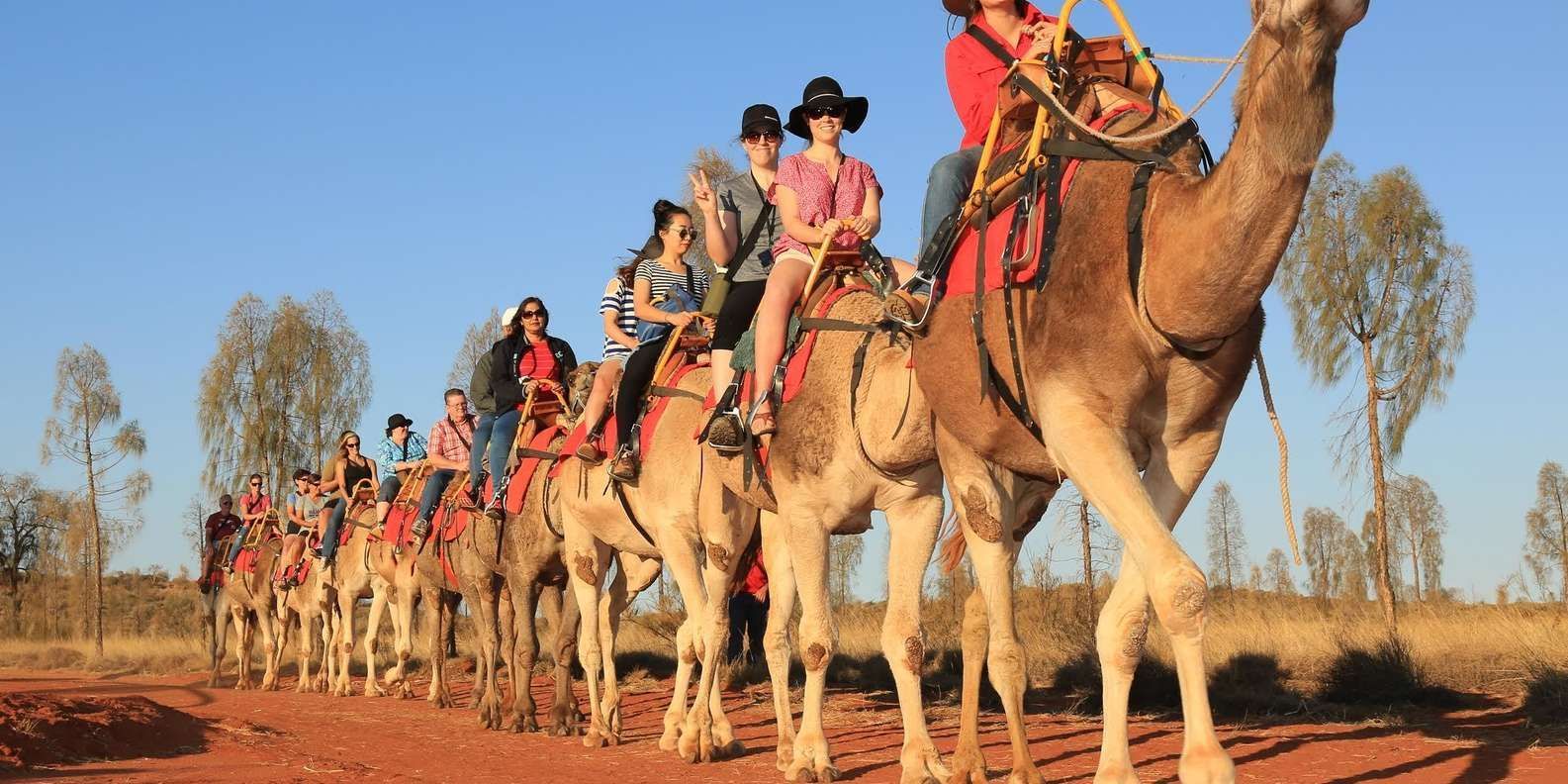
6. Outdoor Activities and Adventures
Camel rides and desert safaris
Experience the unique landscape of the Red Centre on a camel ride or desert safari:
- Uluru Camel Tours: Offers sunrise, sunset, and express camel rides with views of Uluru and Kata Tjuta
- SEIT Outback Australia: Provides 4WD desert safari tours, allowing visitors to explore the region's flora, fauna, and geological features
These tours often include informative guides who share insights about the local ecosystem and indigenous culture.
Scenic flights and helicopter tours
For a bird's-eye view of this magnificent landscape, consider booking a scenic flight or helicopter tour:
- Fixed-wing aircraft tours: Offer broader coverage of the area, including Lake Amadeus and Kings Canyon
- Helicopter tours: Provide a more intimate experience with the ability to hover and capture close-up views
Popular operators include:
- Professional Helicopter Services
- Ayers Rock Helicopters
"Early morning flights often provide the best lighting conditions for photography and a clearer view of the landscape."
Stargazing and astronomy tours
The clear, dark skies of the Outback offer excellent conditions for stargazing and astronomy enthusiasts:
- Ayers Rock Resort's "Outback Sky Journeys": Guided tours using telescopes and binoculars
- "A Night at Field of Light": Combines dinner under the stars with a view of Bruce Munro's installation
These tours often include:
- Insights into Aboriginal astronomy and Dreamtime stories
- Identification of constellations, planets, and other celestial objects
- Information about the Southern Hemisphere's unique astronomical features
Participating in these activities not only provides a memorable experience but also deepens one's appreciation for the natural and cultural significance of Uluru-Kata Tjuta National Park.
7. Respecting the Land and Culture
Understanding the importance of not climbing Uluru
Uluru, also known as Ayers Rock, is a sacred site for the Anangu people, the traditional owners of the land. The decision to close the climb in October 2019 was a significant step towards respecting the cultural significance of this landmark.
The Anangu have long requested that visitors refrain from climbing Uluru for several reasons:
- Cultural significance: The path of the climb follows a sacred dreamtime track.
- Environmental concerns: Erosion and pollution from climbers have damaged the rock face.
- Safety issues: Over 35 deaths have occurred due to climbing accidents since the 1950s.
Visitors are encouraged to appreciate Uluru's beauty and cultural importance from the ground, participating in guided tours and cultural experiences that provide deeper insights into the Anangu culture and the significance of this ancient monolith.
Leave No Trace principles
Adopting Leave No Trace principles is crucial when visiting Uluru-Kata Tjuta National Park. These guidelines help preserve the natural environment and respect the cultural heritage of the area:
- Plan ahead and prepare: Research the area and pack appropriately to minimize waste.
- Travel and camp on durable surfaces: Stick to designated paths and camping areas.
- Dispose of waste properly: Carry out all trash and use provided facilities.
- Leave what you find: Do not remove rocks, plants, or artifacts from the park.
- Minimize campfire impacts: Use designated fire pits and follow fire regulations.
- Respect wildlife: Observe animals from a distance and do not feed them.
- Be considerate of other visitors: Respect the quiet atmosphere and cultural significance of the area.
By following these principles, visitors can help maintain the integrity of this unique ecosystem and cultural landscape for future generations.
Proper etiquette when visiting sacred sites
When visiting sacred sites within Uluru-Kata Tjuta National Park, it is essential to observe proper etiquette:
- Respect restricted areas: Some sites are off-limits due to their cultural significance. Always adhere to signage and guidelines.
- Photography restrictions: Certain areas prohibit photography or filming. Always ask for permission before taking pictures, especially of Aboriginal people.
- Dress appropriately: Wear modest clothing as a sign of respect, particularly when visiting cultural centers or participating in traditional activities.
- Listen to guides: Pay attention to instructions from park rangers and Aboriginal guides, as they provide valuable information about cultural protocols.
- Avoid touching or climbing: Do not touch rock art or climb on sacred sites.
- Maintain silence: Keep noise levels low, especially in areas marked for quiet reflection.
- Ask questions respectfully: If unsure about appropriate behavior, ask park staff or Aboriginal guides politely.
By following these guidelines, visitors demonstrate respect for the Anangu people and their cultural heritage, enhancing the experience for everyone.
Summary
Visiting Uluru-Kata Tjuta National Park offers a unique opportunity to experience the natural beauty and rich cultural heritage of Australia's Red Centre. By respecting the land, following Leave No Trace principles, and observing proper etiquette at sacred sites, visitors can ensure a meaningful and responsible experience. This approach not only preserves the environment and cultural significance of the area but also allows for a deeper appreciation of the Anangu people's connection to this ancient landscape.
Frequently Asked Questions
- Can I still climb Uluru?
No, climbing Uluru has been permanently closed since October 26, 2019, out of respect for the Anangu people's wishes and the site's cultural significance - What are alternative activities to climbing Uluru?
Visitors can enjoy guided walks around the base of Uluru, cultural tours, sunrise and sunset viewing experiences, and visits to the Cultural Centre. - Is photography allowed at Uluru-Kata Tjuta National Park?
Photography is generally allowed, but there are restrictions in certain sacred areas. Always follow signage and guidelines provided by park staff. - How can I learn more about Anangu culture during my visit?
Participate in ranger-guided tours, visit the Cultural Centre, and consider booking experiences with Aboriginal-owned tour operators for authentic cultural insights. - What is the best time of year to visit Uluru-Kata Tjuta National Park?
The most comfortable months for visiting are May to September when temperatures are milder. However, the park is open year-round, offering unique experiences in each season.
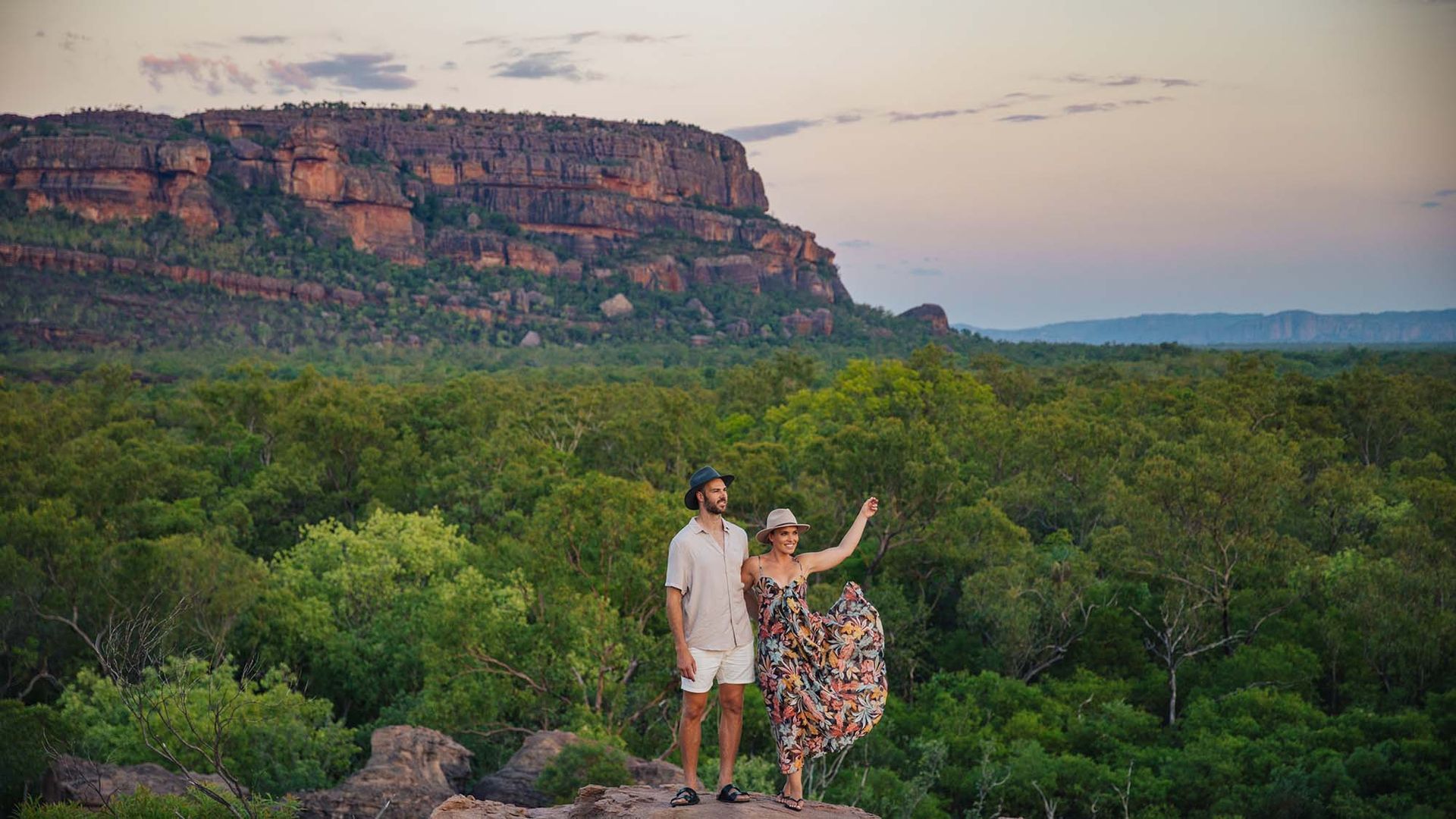
8. Planning Your Visit to Kakadu
Best times to visit
Kakadu experiences two distinct seasons: the wet season (November to April) and the dry season (May to October). Each season offers unique experiences:
Dry Season (May to October):
- More accessible roads and walking tracks
- Lower humidity and cooler temperatures
- Better wildlife viewing opportunities
Wet Season (November to April):
- Spectacular waterfalls and lush landscapes
- Fewer crowds
- Unique wildlife experiences, such as increased bird activity
The shoulder seasons (April-May and September-October) often provide a good balance of accessibility and natural beauty.
Accommodation options
Kakadu offers a range of accommodation options to suit different preferences and budgets:
- Hotels and resorts: For those seeking comfort and amenities
- Camping grounds: For visitors who want to immerse themselves in nature
- Safari camps: Offering a blend of comfort and wilderness experience
- Permanent bush camps: Providing a more rustic experience
It's advisable to book accommodation in advance, especially during peak season (June to August).
Safety and park regulations
Visitor safety is paramount in Kakadu National Park. Some key safety considerations and regulations include:
- Always check current park alerts and road conditions before traveling
- Observe all warning signs, especially those related to crocodiles
- Carry sufficient water and supplies when hiking or exploring remote areas
- Respect sacred Indigenous sites and obtain necessary permits for certain areas
- Follow fire safety guidelines, especially during the dry season
- Purchase a park pass before entering Kakadu
Summary
Kakadu National Park offers visitors an unparalleled opportunity to experience Australia's natural wonders and rich Indigenous culture. From its diverse ecosystems to its ancient rock art, Kakadu provides a truly unique and awe-inspiring adventure. While the park faces ongoing conservation challenges, efforts to protect its biodiversity and adapt to climate change ensure that future generations can continue to enjoy this remarkable landscape.
Frequently Asked Questions
- Q: How long should I plan to stay in Kakadu National Park?
A: A minimum of 3-4 days is recommended to experience the park's highlights, but a week or more allows for a more comprehensive exploration. - Q: Are there guided tours available in Kakadu?
A: Yes, various guided tours are available, including cultural tours led by Indigenous guides, wildlife spotting tours, and scenic flights. - Q: Is it safe to swim in Kakadu's waterholes?
A: Some waterholes are designated for swimming, but always check current safety notices and obey all warning signs due to the presence of saltwater crocodiles in many areas. - Q: What wildlife can I expect to see in Kakadu?
A: Kakadu is home to diverse wildlife, including kangaroos, wallabies, dingoes, and over 280 bird species. Saltwater crocodiles are also common in many waterways. - Q: Can I visit Kakadu National Park in the wet season?
A: Yes, but be aware that some areas may be inaccessible due to flooding. The wet season offers unique experiences such as dramatic landscapes and increased bird activity.

